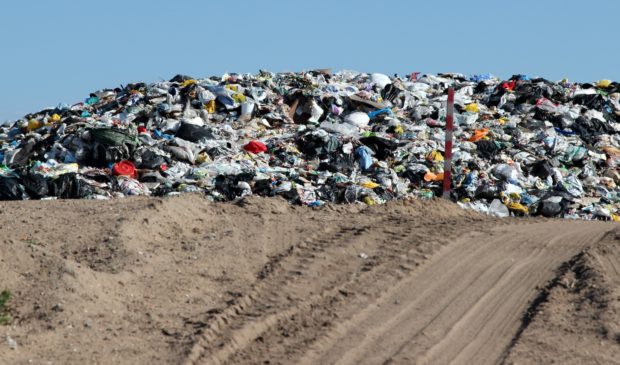Zero Waste Advisory Commission buries landfill criteria matrix
Friday, October 12, 2018 by
Ryan Thornton Austin’s Zero Waste Advisory Commission met Wednesday night and voted to scrap a two-year effort at creating a matrix of criteria that could objectively evaluate landfills for city use.
The commission was presented with two matrices — one developed by stakeholders and one by city staff — either to choose from or combine into one. Commissioners were also free to take no action or, as was the case, to reject them both.
Abstraction and objectivity — two of the criteria matrix’s most obvious advantages — turned out to be its demise Wednesday night. The objectivity which was supposed to make the criteria matrix reliable and broadly useful rendered it, according to several commission members and numerous others who spoke during public hearing, incapable of addressing the needs of the community for which it was initially developed.
After more than two hours of discussion, Commissioner Jonathan Barona highlighted this paradox by stating that the commission was having “two different conversations” without acknowledging it.
“I don’t understand why we’re trying to solve a problem with a specific landfill that we’re talking about in an objective tool that staff can use to evaluate criteria,” said Barona, in reference to Waste Management’s Austin Community Landfill in Northeast Austin.
Austin Community Landfill has historically been a site of serious concern for environmentalists, social activists, and District 1 residents living and working nearby. The myriad objections to the landfill were the reason the commission proposed the creation of an objective evaluative tool two years ago. None of these major community concerns, however, were reflected in the matrix criteria presented to the commission.
“Having been a part of it from the beginning and in almost all of the meetings since, I am pretty alarmed to see that the main points that … the stakeholders were most concerned about were omitted,” said Commissioner Joshua Blaine. “I don’t see anything in this legal memorandum that explains why you left out hazardous waste, history of city opposition and demographics of landfill. Those are the big three things that we’re talking about here.”
Environmentalists argue, among other concerns, that the site has a history of hazardous industrial waste that predates the safety regulations enforced today, which is environmentally toxic and also creates a potential financial liability for the city of Austin — as well as any other entity that dumps waste on-site — if it chooses to use the landfill.
Andrew Dobbs, program director for Texas Campaign for the Environment, stated that the adoption of the criteria matrix would lead the city to the erroneous conclusion that working with the Austin Community Landfill was safe for the environment and the community.
“If you were to take a matrix that actually incorporated what Council had asked for, what this commission unanimously asked for and what the stakeholder process arrived at, if you had a criteria set … that represented that, it would come to a different set of outcomes than the criteria before you,” said Dobbs.
Objections from District 1 residents living by the landfill were also a very important consideration for the commission. These residents – many of whom are displaced victims of inequity – are already worried about the landfill leaking toxic metals into the surrounding area as well as the odors originating at the site.
Melanie McAfee, owner of Barr Mansion & Artisan Ballroom in Northeast Austin across the street from Austin Community Landfill, urged the commission to abandon the need for criteria in deciding whether the city should dump waste at the site, making the situation worse for those living nearby.
“You can just look at the history: It began with buying land that had toxic waste, that had more toxic waste than Love Canal,” she said, referencing the infamously toxic New York landfill. “Why build an elaborate web of points that is not necessary at all?”
The commission was largely in agreement with public comments criticizing the criteria matrix.
Commissioner Amanda Masino expressed gratitude for the work that has gone into the development of the criteria matrix alongside the conviction that “a matrix, a scoring system, is not the way to actually add evaluations of hazard and impact and social equity and community impact.”
“If that’s what we’ve learned from this long, somewhat difficult process, that’s still valuable because it means there’s a different way to get to the goal that maybe isn’t a numerical score,” said Masino.
With the hopes of eventually developing a more appropriate evaluative criteria that better addresses community concerns, Blaine motioned to reject both criteria matrices entirely.
The motion passed 6-1 with Commissioner Heather-Nicole Hoffman opposed and Barona and Chair Gerry Acuna abstaining.
City Council will consider the commission’s vote for approval on Nov. 15.
This story has been corrected to reflect the fact that Acuna, not Cathy Gattuso, abstained from the vote. Photo by Estormiz [CC0], from Wikimedia Commons.
The Austin Monitor’s work is made possible by donations from the community. Though our reporting covers donors from time to time, we are careful to keep business and editorial efforts separate while maintaining transparency. A complete list of donors is available here, and our code of ethics is explained here.
You're a community leader
And we’re honored you look to us for serious, in-depth news. You know a strong community needs local and dedicated watchdog reporting. We’re here for you and that won’t change. Now will you take the powerful next step and support our nonprofit news organization?










